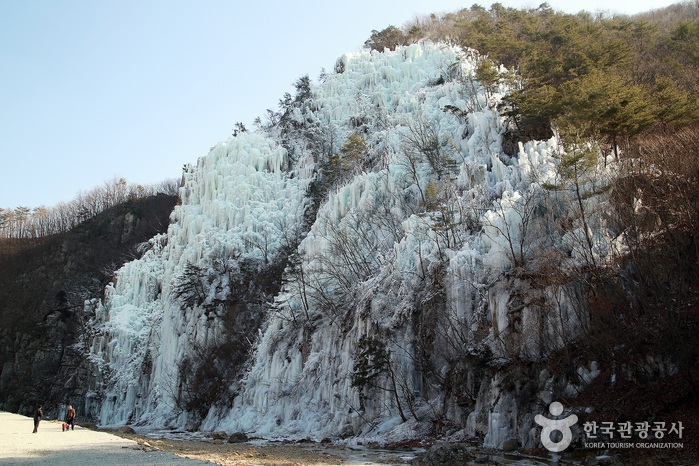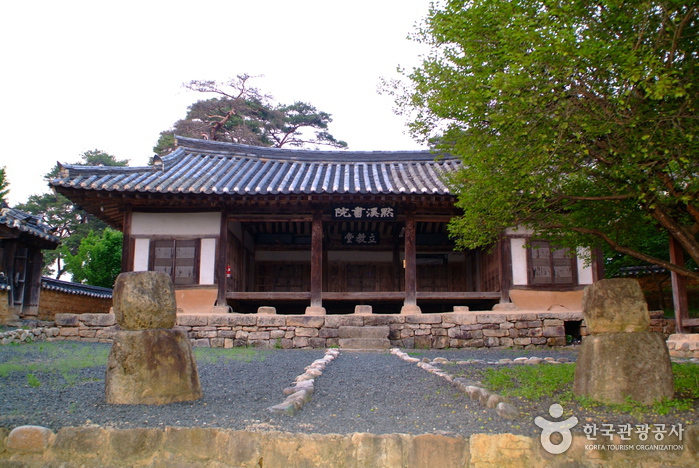Song jeong Historic House [Korea Quality] / 송정고택 [한국관광 품질인증]
9.7 Km 8154 2020-09-10
15-1, Songsogotaek-gil Pacheon-myeon, Cheongsong-gun, Gyeongsangbuk-do
+82-10-8746-6690
Cheongsong-gun in Gyeongsangbuk-do is a small village blessed with a spring flowing with natural mineral water, a beautiful valley with a majestic waterfall, and a mountain densely covered with pine trees. Thanks to this superb natural environment, Cheongsong-gun was designated as a 'Slow City' in 2011. Songjeong gotaek (The Old House of Songjeong) is located in the village of Deokcheon in Cheongsong-gun, which is one of the three richest and most prestigious families in the region.
These three wealthy families are said to have produced millionaires for nine generations - from Sim Cheon-dae during the reign of King Yeongjo of Joseon (r. 17224-1776) to the 1960s. In particular, it was a seventh-generation grandson, Sim Ho-taek (pen-name: Songso), famous as one of the richest men in Joseon, who built Songso gotaek (Old House of Songso) along with three houses for his three sons, including Songjeong gotaek for his second son Sim Sang-gwang (pen-name: Songjeong) around 1880. As the Cheongsong Sim Clan has lived in the area for many generations, Cheongsong is known as the village of the Cheongsong Sim family.
Covering a total area of about 10,000m2, Songjeong gotaek has a tall and grand front gate that symbolizes the wealth of the family. Upon entering by the gate, the large outer courtyard comes into view, followed by a gate connecting to the Old House of Songso on the right, and a walking path connecting to a well and a pine grove on the left. The square-shaped structure consists of a sarangchae (detached building), chaekbang (library), and daecheongmaru (main floored room). Passing through the entrance, there are the main building and the inner courtyard. Notably, the chaekbang has retained its original appearance from the time when it was used by Sim Sang-gwang.
Although the house is very large, its interior is simply and modestly designed according to the virtues favored by classical scholars. The rooms are floor-heated in the traditional way (by ondol) using wood, decorated with traditional hanji (Korean paper), and equipped with traditional bedding.
Songjeong gotaek offers visitors a variety of experience programs designed to promote the form of Korean classical music known as Gukak. It holds three major musical events each year including a pansori folksong program and a fusion gukak concert, attracting an audience of anywhere from 200 to 800 people to the courtyard of the house. Sometimes, families hold parties to celebrate their parents’ 60th, 70th, and 80th birthdays.
The low hill situated behind the house has a quiet walking path.
Chalbanggong Head House [Korea Quality] / 찰방공종택 [한국관광 품질인증]
9.8 Km 5840 2020-09-10
23-8, Songsogotaek-gil Pacheon-myeon, Cheongsong-gun, Gyeongsangbuk-do
+82-54-873-6502, +82-10-9502-7611
The Chalbanggong Head House is a resting place in nature that is open to everyone. The house was built in 1933 as the head house of Chalbanggong Shim Dang, a 9th-generation descendant of Akeungong from Cheongsong Shim’s Family. The place was also used as a village school and is designated as local cultural heritage no. 13. The structure of the house is shaped like the Korean alphabet "ㄷ". The fact that the gate of the house is facing north is very unusual. The house is positioned next to the Songso Old House, which has 99 rooms, and is composed of Ondol rooms heated by firewood as well as a wide yard and a vegetable garden. The place provides a comfortable resting space for those who want to enjoy the atmosphere of a traditional Korean-style house that they cannot easily see in urban areas. The rooms are papered with traditional Korean paper and equipped with beddings. The house is located in a region that is so quiet you can barely hear a thing except the sound of birds and wind. There is an ancestral shrine in the head house that looks just like a warm grandma’s house.
Valle Eoreumgol de Cheongsong (청송 얼음골)
12.1 Km 40002 2023-01-27
Naeryong-ri, Juwangsan-myeon, Cheongsong-gun, Gyeongsangbuk-do
El municipio de Cheongsong-gun, en la provincia Gyeongsangbuk-do, es muy famoso por la calidad de sus aguas. En el valle Eoreumgol, el agua se congela incluso en verano, debido a los vientos fríos propios del valle. Muchas personas visitan este lugar donde el verano para probar las aguas frescas y tomar fotos pintorescas en las formaciones rocosas de los alrededores y de un templo en las cercanías. Hay un acantilado llamado Wonja, justo debajo del valle helado, que ofrece un refugio del calor del verano junto con vistas de una cascada artificial de 62 m de altura. En invierno, todo el lugar se congela y muchas personas escalan las paredes de hielo o participan de competiciones de esta disciplina. Aun cuando usted no sea afecto a los deportes invernales, aproveche las majestuosas vistas de las paredes de hielo de aquí en invierno, que atraen a muchos fotógrafos profesionales.
Academia Neoconfuciana Mukgye Seowon y Residencia Mukgye del Clan Kim de Andong (묵계서원 및 안동김씨 묵계종택)
17.8 Km 20714 2024-05-17
Chunghyo-ro 1736-5, Giran-myeon, Andong-si, Gyeongsangbuk-do
Pabellón Manhyujeong (만휴정)
18.1 Km 19074 2023-02-13
Mukgyehari-gil 42, Giran-myeon, Andong-si, Gyeongsangbuk-do
![Song jeong Historic House [Korea Quality] / 송정고택 [한국관광 품질인증]](http://tong.visitkorea.or.kr/cms/resource/75/2573875_image2_1.jpg)
![Chalbanggong Head House [Korea Quality] / 찰방공종택 [한국관광 품질인증]](http://tong.visitkorea.or.kr/cms/resource/07/2528907_image2_1.jpg)



 Español
Español
 한국어
한국어 English
English 日本語
日本語 中文(简体)
中文(简体) Deutsch
Deutsch Français
Français Русский
Русский